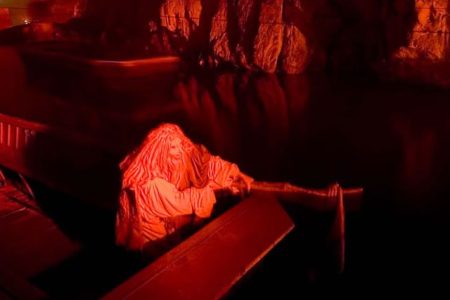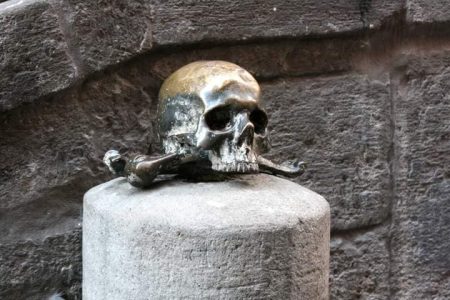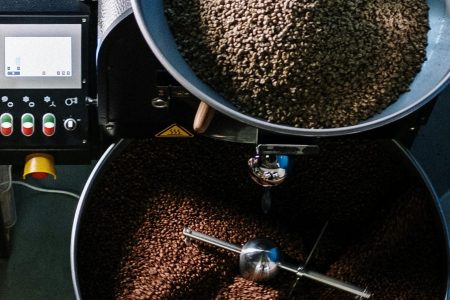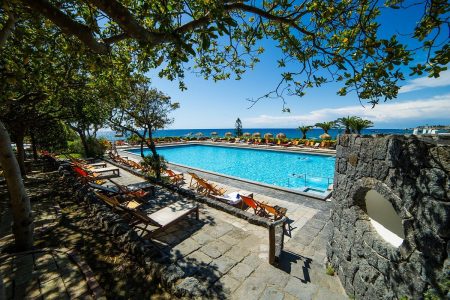To understand the importance of the Feast of the Dead for the city of Naples, it is sufficient to quote the first lines of Totò's poem, 'A level:
"Every year, on November 2, there is a custom for the deceased to go to the Cemetery. Each ll'addà chesta crianza; each ll'adda tené chistu penziero."
In his play Totò tries to tell what happens in Naples on the occasion of the commemoration of the dead, when everyone goes to the cemeteries in order to pay their respects to loved ones who are no longer with us.
Each November 2 the capital city carefully prepares to celebrate this most heartfelt occasion, in which the sacred and profane mingle. Neapolitans have always reserved a special place for remembering the dead. Just think of the macabre ritual of the worship of the pezzentelle souls and to a whole range of traditions that seek to preserve the connection with the afterlife.
The cult of the dead in the Neapolitan city
Worship of the dead in southern Italy is a deeply rooted custom that has very ancient origins. In the Neapolis built by the Greeks, cults dedicated to the goddess Hecate, the deity who was able to connect the dead and the living. The feast for the commemoration of the dead was officially established only in the 14th century by the Catholic Church and was called Anniversarium Omnium Animarum.
For many people even today, Monday is the day to visit the souls in purgatory. This is the famous worship of the beggar souls, now more in disuse, but still practiced in some churches such as San Pietro ad Aram, Santa Maria delle Anime del Purgatorio ad Arco, Santa Luciella ai Librai, Sant'Agostino alla Zecca and the famous Fontanelle Cemetery.
Before cemeteries were established in the early nineteenth century, the dead in Naples were buried in churches, family chapels, the underground hypogea or in mass graves. The plague that struck the city in the early seventeenth century decimated two-thirds of the local population, and over the centuries residents began to care for the poor souls of these unfortunate people.
The adjective pezzentelle referred to the fact that they were poor people or people without families, and some Neapolitan families would adopt a skull and care for it as if it were their own loved one. Often around the skull they would build a small shrine or place a cardboard box around it. Neapolitans prayed for these souls to reach Heaven and also asked them for numbers to play in the lottery or a pardon.
Neapolitan rites to celebrate the Feast of the Dead
The rituals for the Feast of the Dead begin as early as the evening of the October 31, when many families light a candle at sunset to put it outside the window or leave a place set at the table.
There are also those who leave a bucket of water under the window to give refreshment to the souls of the departed. All these superstitions serve to point the way back to the souls of loved ones and relieve their suffering. Then on October 31, children would walk around with a tin or cardboard box resembling a coffin to ask for treats from passersby to the cry of "Cicci Muorti", an expression that referred to a poor dessert made from grains of wheat.
It used to be that churches also remained open on this night so that the deceased could still attend the liturgy. Instead, on the morning of Nov. 2 it is customary to go to cemeteries in Naples to pay homage to the memory of family members no longer on this earth by bringing them flowers, plants or votive lights. A silent and heartfelt "crawl" of people who want to keep alive the memory of those who are no longer with us takes place among the tree-lined avenues.
During the time of the Festival of the Dead, there is no shortage of culinary traditions typical of these days. For example, you can never miss chowder or liver rolls with bay leaves. These two dishes are made from pork offal and would seem to derive from the custom of eating the entrails of animals sacrificed for the refrigeria ritual, the meal that took place at the grave of the deceased.
It is then customary to consume pomegranate, the fruit linked to the myth of Persephone, the goddess of the underworld wife of Hades who was condemned to remain in the realm of the dead for having tasted a grain. The most popular product, however, that is eaten for the November 2 holiday is the so-called "nougat of the dead", not to be confused with the classic hard nougat made from honey and almonds.
Nougat of the dead is soft and shaped like a rectangular brick that is supposed to resemble a small coffin. That is why it is also known as o' murticiello. It consists of chocolate and whole hazelnuts, but Neapolitan pastry shops are offering alternative flavors made with coffee, white chocolate, pistachio, caramel and many other ingredients.
Finally, on the streets of Naples you can buy a nice cuppetiello of landed ammennole, i.e., a foil with caramelized almonds so called because for their preparation they are literally submerged in sugar.
What to do in Naples on November 2
Are you in Naples on the Day of the Dead and would you like to have some experiences to get into the atmosphere of this very special period? No problem. For you we have thought of some activities around the city that will allow you to learn about its history and appreciate its so mysterious charm.
For example, why not treat yourself to a nice ghost tour notturno nel centro storico? In the company of an experienced guide, you can go ghost hunting with real paranormal detection instruments. You will start from Jesus Square to continue to Piazza San Domenico Maggiore and the Pietrasanta Bell Tower.
Equally interesting is this tour of esoteric Naples, thanks to which you will be able to deepen your knowledge of the most magical and occult part of Naples. You will be able to admire wonderful monuments and palaces full of alchemical and esoteric symbols that will take you back in time.
The route includes 11 stops and winds through some iconic places such as Jesus Square, the Monastery of St. Clare, Piazza San Domenico Maggiore, the Sansevero Chapel, the Devil's Palace and Santa Maria La Nova, where Dracula's tomb is said to be housed.
Finally, you can always opt for this tour delle streghe nel centro storico di Napoli. This evocative experience kicks off every Saturday in the late afternoon and for 2 hours will show you different places related to the world of witchcraft. You will visit the Basilica of San Domenico Maggiore, the Museum of Torture, San Gaetano Square and the Basilica of Pietrasanta.
What are you waiting for to purchase your ticket? Come spend November 2 with us!








0 Comments